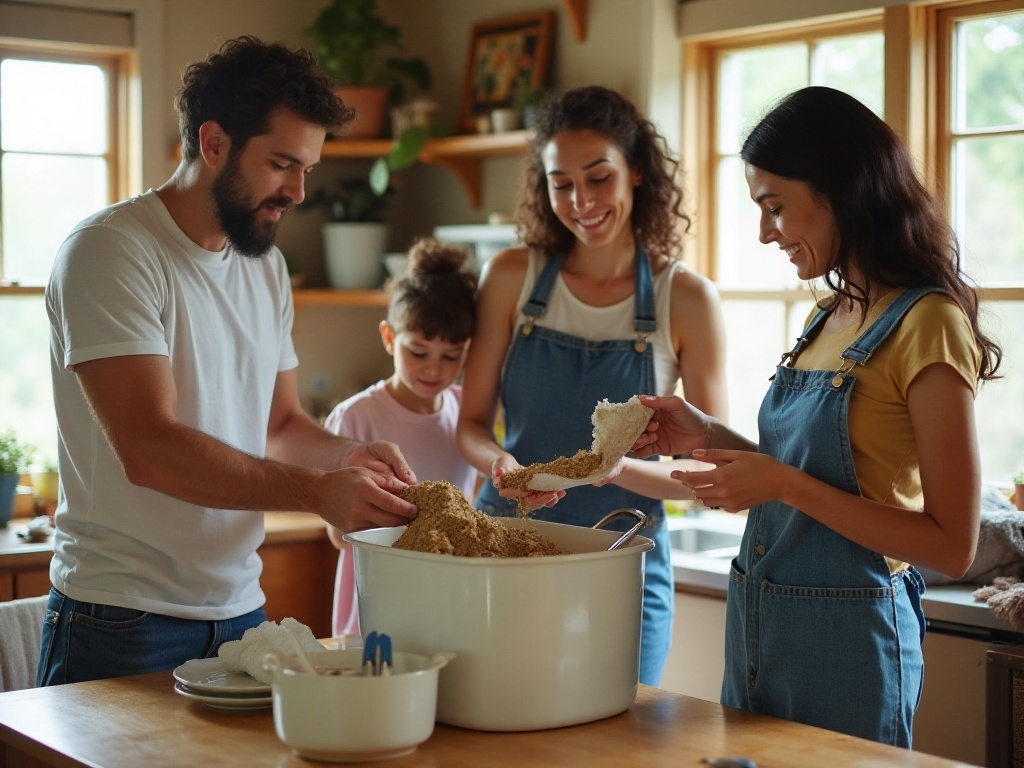Time Management

The Pomodoro Technique
Have you ever felt that time flies by quickly, yet you haven't accomplished anything by the end of the day? Don't worry, let me introduce you to a super practical time management method—the Pomodoro Technique. As the name suggests, this method uses a tomato-shaped timer to manage your work and break times. How does it work?
First, you need a timer, such as the "Focus Keeper" app on your phone. Set a 25-minute work period and focus intensely on your work. While 25 minutes might not sound long, when you're fully concentrated on a task, you'll find this time incredibly valuable. In these brief 25 minutes, you can complete a draft report or solve a small programming problem.
When the timer rings, remember to give yourself a 5-minute break. Though 5 minutes seems brief, it's enough time to stand up, stretch, move your stiff body, drink some water, or simply close your eyes for a rest. This short break can effectively relieve your fatigue, allowing your brain to briefly relax and prepare for the next 25-minute work session.
After repeating this cycle four times, take a longer 15-30 minute break. This extended break can be used for more relaxing activities, like listening to music, looking out the window, or chatting with friends. The purpose of the long break isn't just relaxation but also giving your brain enough time to process and organize the information received during work.
The essence of this method lies in using short breaks to relieve fatigue and improve focus. You might wonder why it's called the Pomodoro Technique? Because its creator, Francesco Cirillo, used a tomato-shaped timer to manage his study time in college. Isn't that a cute story?
I find this technique very useful, especially for tasks requiring long periods of concentration, like writing, programming, or studying. Give it a try, and you'll discover that time management can really be this simple. Imagine completing those easily overlooked small tasks one by one, gradually building up to a great sense of achievement.
The Two-Minute Rule
Have you ever procrastinated endlessly on small tasks? Like washing dishes or organizing your desk, always thinking "I'll do it later," until procrastination becomes chronic? Don't worry, there's a method to help you overcome this—the Two-Minute Rule.
This rule is very simple: if a task can be completed within two minutes, don't delay, do it immediately. Think about it: while waiting for water to boil, you can completely wash the dishes or organize the files on your desk. This not only improves efficiency but also gives you a sense of accomplishment.
After completing these small tasks, you'll find your living environment becomes cleaner and more orderly. More importantly, you no longer need to worry about these small matters because they've been handled subconsciously. You can treat these small successes as rewards for yourself, celebrating each small task completion.
I personally love this method because it helps me make full use of fragmented time. Look, we have many small pockets of time each day, and if we can utilize them all, wouldn't we be able to accomplish more? For instance, you can reply to emails while waiting for the bus, or wash last night's dishes while waiting for the coffee machine to brew.
Space Utilization

Vertical Storage
Friends living in small apartments, do you often struggle with insufficient space? Today I bring you a super practical life hack—vertical storage. Using wall and ceiling space can "expand" your living space.
You can install shelves or hooks to hang items that aren't frequently used. For example, hanging your bicycle on the wall not only saves floor space but also makes your home look neater. Also, kitchen utensils and toolbox items can be hung up.
I remember when I first moved into my new home, space was really tight. After using this method and hanging many things up, the space suddenly became much more spacious. Imagine if you put all your books on wall-mounted shelves, how neat and spacious your room would look. Think about it, if you could rationally utilize everything, wouldn't your life become more organized and comfortable?
Moreover, vertical storage can make your life more aesthetically pleasing. You can choose attractive storage racks or hooks that match your home's color scheme and style, making your home not just practical but also full of artistic flair. Imagine various delicate items hanging on the wall, each perfectly placed—this isn't just storage space, but a stage to showcase your personality.
Memory Enhancement
The Method of Loci
Do you often forget things you need to buy or key points from meetings? No worries, let me introduce you to an ancient but effective memory technique—the Method of Loci. This method uses familiar places to associate things you need to remember with specific locations.
For example, if you need to remember to buy milk, eggs, and bread, you can imagine a bottle of milk at your doorstep, a dozen eggs on your living room sofa, and fresh bread on your kitchen table. When you walk into your home, you'll naturally remember these items.
The advantage of this method is that it uses our memory of familiar environments to strengthen the memory of new information. I find this technique very useful, especially when you need to remember scattered information without logical connections. It's like building a virtual "shopping cart" in your mind, allowing you to easily retrieve information when needed.
Imagine you're attending an important meeting and need to remember several key points. You can use different areas of the conference room as your memory locations: a big "report" folder on the conference table, a "project progress" chair in the corner, and "financial statements" by the window. This way, you can not only remember this information but also easily retrieve it during the meeting.
Kitchen Life Hacks
Using Clips for Recipes
Have you ever encountered this problem while cooking: your recipe on the table gets blown away by kitchen smoke, or you have to put down what you're doing to turn pages? At times like these, a simple clip can be a big help.
Use a binder clip to securely attach the recipe to your cabinet door, so you can read the recipe while cooking without worrying about it flying away. This is especially helpful when you need to handle multiple steps simultaneously—it's definitely a kitchen lifesaver.
I remember once when making a cake, the recipe was full of steps and measurements, and I was making a mess trying to beat eggs while flipping through the recipe. After using this method, it became so much easier—no more worrying about recipes "flying away." Imagine being able to glance at the next step while you're busy chopping vegetables or frying meat, without having to stop to turn pages—isn't that much more efficient?
Zero Waste Living

Home Composting
Have you ever thought that the food waste thrown out from your kitchen daily could actually become organic fertilizer? Yes, home composting is such a great method. It not only reduces the burden on landfills but also provides nutrients for your plants.
You can prepare a compost bin or tumbler and throw in kitchen waste (like vegetable leaves and fruit peels). After some time, this waste will turn into nutrient-rich soil. You can use it to grow plants or as fertilizer for your garden.
I think this method isn't just about being environmentally friendly; it's a lifestyle attitude. Through your own efforts, you reduce environmental burden while making your life healthier and more meaningful. You see, environmental protection isn't actually far away—it's in our daily lives. Imagine your kitchen waste no longer being waste but becoming nutrients for your garden—isn't that a beautiful cycle?
Choosing Reusable Products
Have you noticed how many disposable products we use in our lives? Like plastic bags, paper towels, plastic cups, etc. These items not only increase the pressure on waste disposal but also cause irreversible environmental pollution. Today let's talk about how to reduce waste by choosing reusable products.
For example, you can use cloth napkins instead of paper towels, beeswax wraps instead of plastic wrap, and reusable water bottles instead of disposable plastic bottles. Another tip is to bring your own containers for takeout food, which not only reduces plastic packaging use but also makes your takeout healthier.
I remember once going to a retail store and the clerk offered me several reusable shopping bags. I thought it was a great idea—not just environmentally friendly but also practical. Now, I'm used to bringing my own shopping bags, which not only contributes to the environment but also saves money. Imagine every time you use these reusable products, you're not only contributing to the environment but also saving money—isn't that killing two birds with one stone?

Bulk Buying
Did you know that buying in bulk not only saves money but also greatly reduces packaging material use? For example, when buying rice, flour, nuts, and other foods from retail stores or supermarket bulk sections, you can bring your own containers. This not only reduces plastic packaging use but also allows you to buy according to your needs, avoiding waste.
I once visited a retail store where the staff strongly supported customers bringing their own containers, even offering discounts to encourage environmental protection. Through this approach, I not only reduced waste but also met many like-minded friends, all working together to contribute to environmental protection—it feels great. Imagine if you buy a jar of honey in bulk, you not only save money but also reduce the packaging waste from multiple purchases.
Making Your Own Cleaning Products
Have you ever wondered what ingredients are actually in those store-bought cleaners? Some chemicals are not only harmful to the environment but also potentially threatening to our health. Today let's talk about how to make eco-friendly cleaning products.
The materials you need are very simple: white vinegar, baking soda, and some essential oils. Mix water and white vinegar in a 1:1 ratio, add a few drops of your favorite essential oil like lemon or lavender, and you've got an all-purpose cleaner. Baking soda can be used for deodorizing and cleaning kitchen sinks.
I think making your own cleaning products is not only environmentally friendly but also gives a sense of achievement. Knowing that everything you use is natural, without chemical additives—isn't this lifestyle worth promoting? Imagine when you're making cleaning products, you're not just cleaning your home but also purifying your lifestyle.
Clothing Care
Have you ever thought that throwing away clothes is actually wasting resources? Today let's talk about how to reduce waste through clothing repair and reuse.
For example, if your jeans tear, you can choose to mend them instead of throwing them away. Or transform old T-shirts into new shopping bags. You can use your creativity to turn old clothes into new items.
I remember once when the cuff of my favorite sweater tore, I decided to mend it myself. Not only did I fix it, but I also gave this sweater new life. Now, whenever I wear it, I remember the care put into each stitch. Imagine every time you repair or reuse a piece of clothing, you're not just saving resources but also creating something new—isn't that a beautiful way of life?
Through these life hacks and eco-friendly lifestyle choices, we not only make life more efficient and comfortable but also contribute to environmental protection. Which of these methods have you tried? Feel free to share your experiences and thoughts in the comments section, and let's work together for a better life and environment.


